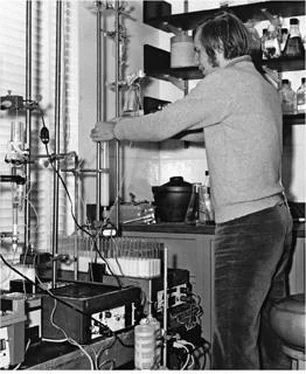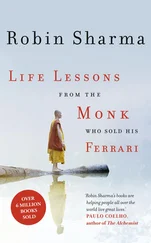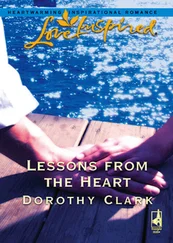James Watson - AVOID BORING PEOPLE - Lessons from a Life in Science
Здесь есть возможность читать онлайн «James Watson - AVOID BORING PEOPLE - Lessons from a Life in Science» весь текст электронной книги совершенно бесплатно (целиком полную версию без сокращений). В некоторых случаях можно слушать аудио, скачать через торрент в формате fb2 и присутствует краткое содержание. Жанр: Биографии и Мемуары. Описание произведения, (предисловие) а так же отзывы посетителей доступны на портале библиотеки ЛибКат.
- Название:AVOID BORING PEOPLE: Lessons from a Life in Science
- Автор:
- Жанр:
- Год:неизвестен
- ISBN:нет данных
- Рейтинг книги:5 / 5. Голосов: 1
-
Избранное:Добавить в избранное
- Отзывы:
-
Ваша оценка:
- 100
- 1
- 2
- 3
- 4
- 5
AVOID BORING PEOPLE: Lessons from a Life in Science: краткое содержание, описание и аннотация
Предлагаем к чтению аннотацию, описание, краткое содержание или предисловие (зависит от того, что написал сам автор книги «AVOID BORING PEOPLE: Lessons from a Life in Science»). Если вы не нашли необходимую информацию о книге — напишите в комментариях, мы постараемся отыскать её.
AVOID BORING PEOPLE: Lessons from a Life in Science — читать онлайн бесплатно полную книгу (весь текст) целиком
Ниже представлен текст книги, разбитый по страницам. Система сохранения места последней прочитанной страницы, позволяет с удобством читать онлайн бесплатно книгу «AVOID BORING PEOPLE: Lessons from a Life in Science», без необходимости каждый раз заново искать на чём Вы остановились. Поставьте закладку, и сможете в любой момент перейти на страницу, на которой закончили чтение.
Интервал:
Закладка:
Seymour Cohen(b. 1917)—In 1971, he left the University of Pennsylvania for the University of Colorado in Denver, where he was a professor in the School of Medicine until 1976. He then moved to the State University of New York at Stony Brook, from which he retired in 1985.
Francis Crick(1916-2004)—At the age of sixty-one, he moved to the Salk Institute to pursue a new career as a neurobiologist, eventually to study the nature of consciousness with Caltech's Christof Koch. The already much valued biography, Francis Crick: Discoverer of the Genetic Code (Atlas Books/ Harper Collins), by English scientist/writer Matt Ridley, appeared in mid-2006.
Manny Delbrück(1917-1998)—She continued to live at Caltech until her death from breast cancer.
Max Delbrück(1906-1981)—After 1957, his research turned to problems in sensory physiology, which he studied using the mold Phycomyces, until his death from multiple myeloma. In 1969, he received the Nobel Prize in Physiology or Medicine together with Alfred Hershey and Salvador Luria for their work on bacteriophage.
Milislav Demerec(1895-1966)—Following his retirement at age sixty-five as director of Cold Spring Harbor Laboratory in 1960, he continued work on Salmonella genetics at Brookhaven National Laboratory until 1965.
August (Gus) Doermann(1918-1991)—After conducting research at Oak Ridge National Laboratory, he worked at Rochester and Vanderbilt before becoming professor of genetics at the University of Washington in 1964. His retirement years after 1982 were spent in the Canadian Yukon.
Paul Doty(b. 1920)—In his later career, he became increasingly involved in issues of international security, founding in 1973 what is now the Belfer Center for Science and International Affairs at the John E Kennedy School of Government at Harvard.
Renato Dulbecco(b. 1914)—After leaving Indiana University for Caltech in 1949, he began research on animal viruses, eventually to focus on tumor
viruses as a founding member of the Salk Institute. His lab's finding that DNA tumor viruses cause cancer by inserting their genes into host cell DNA led to his sharing the 1975 Nobel Prize in Physiology or Medicine. Later he became one of the earliest proponents of the Human Genome Project, saying that until the human genome was known we would not have the knowledge to beat cancer.Julian Fleischman(b. 1933)—After finishing his Ph.D. at Harvard in 1960, he went on to postdoctoral training at Stanford University and several other institutions. In 1963 he coauthored a paper proposing a detailed structure for the antibody molecule. He later joined the Department of Molecular Microbiology at Washington University School of Medicine in St. Louis, where he continues to study antibody structure, synthesis, and diversity.
Rosalind Franklin(1920-1958)—After moving to Birkbeck College in the spring of 1953, she worked on the structure of tobacco mosaic virus until her tragically premature death from ovarian cancer in 1958. Her life is the subject of Brenda Maddox's much acclaimed biography Rosalind Franklin: The Dark Lady of DNA.
Carleton Gajdusek(b. 1923)—He spent the majority of his career at the National Institutes of Health and received the 1976 Nobel Prize in Physiology or Medicine for his research on the infectious nature and epidemiology of the prion disease kuru, which he studied in a population of South Fore people in the highlands of New Guinea beginning in the mid-1950s.
George (Geo) Gamow(1904-1968)—After a twenty-two-year career as professor of physics at George Washington University, he moved to the University of Colorado at Boulder in 1956, where he worked until his death.
Ray Gesteland(b. 1938)—After spending his postdoctoral years in Geneva with Alfred Tissières, he came in 1967 to Cold Spring Harbor Laboratory, where he served as assistant director. In 1978 he moved to the University of Utah, where he is now vice president for research.
Celia Gilbert(b. 1932)—She now divides her time between painting, writing poetry, and taking delight in her children and grandchildren.
Wally Gilbert(b. 1932)—He received the 1980 Nobel Prize in Chemistry with Frederick Sanger for their independent development of DNA sequencing methods. In 1982, he briefly left Harvard to run Biogen, the then Swiss-based biotechnology company he had helped found two years earlier. No longer running a research group as professor emeritus, he remains a senior
fellow of the Harvard Society of Fellows and continues to be closely involved with biotechnology. He also devotes much time to photography and classical antiquities.Don Griffin(1915-2003)—After leaving Harvard's Biology Department in 1965, he moved on to Rockefeller University's field station for behavioral studies in Millbrook, north of New York City.
Gary Gussin(b. 1939)—After his postdoctoral years in Geneva, Switzerland, he joined the faculty of the University of Iowa, where he is currently professor of biological sciences.
Alfred Hershey(1908-1997)—In 1969 he shared the Nobel Prize in Physiology or Medicine for his and Martha Chase's 1950 demonstration that phage DNA, not protein, is its genetic material. He retired in 1972 from active research at Cold Spring Harbor Laboratory, continuing to live near the lab until his death.
Nancy Hopkins(b. 1943)—After joining the Center for Cancer Research at MIT in 1973, she pursued research on RNA tumor viruses. Switching her focus later to zebra fish, she developed a new method of insertional mutagenesis that identified hundreds of genes necessary for zebra fish development. In recent years she has promoted gender equity at MIT, where she is now the Amgen Professor of Biology.
Robert Hutchins(1899-1977)—After leaving the University of Chicago in 1951, he became associate director of the Ford Foundation and the chairman of its new Fund for the Republic. In 1959 he founded the Center for the Study of Democratic Institutions in California, which he led until his death.
Frangois Jacob(b. 1920)—After being awarded the 1965 Nobel Prize in Physiology or Medicine with André Lwoff and Jacques Monod for their work on bacterial gene regulation, he has continued to work at the Institut Pasteur, where he served as chairman of the board from 1982 to 1988. Among his influential books are his autobiography, The Statue Within; The Logic of Life; and more recently Of Flies, Mice, and Men.
Herman Kalckar(1908-1991)—In 1952 he returned to the United States to work first at the National Institutes of Health, then at Johns Hopkins University, and finally, in 1961, at Harvard Medical School, as head of the Biochemical Research Laboratory of Massachusetts General Hospital.
John Kendrew(1917-1997)—In the early 1970s he helped create the European Molecular Biology Laboratory in Heidelberg, becoming its first director
when it opened in 1974. He then served as president of St. John's College, Oxford, from 1981 to 1987.Charles Kurland(b. 1936)—After receiving his Ph.D. from Harvard, he moved on to a postdoctoral position at the Microbiology Institute of the University of Copenhagen. From there he moved to the University of Wisconsin and then in 1971 to Uppsala University in Sweden. He is now professor emeritus of its Department of Molecular Evolution as well as at the Department of Microbiology at the University of Lund.
Joshua Lederberg(b. 1925)—In 1959 he left the University of Wisconsin to found and chair the Department of Genetics at Stanford University; in 1978 he moved again to Rockefeller University in New York, where he served as president until his retirement in 1990. In 2006, he received the Presidential Medal of Freedom
Читать дальшеИнтервал:
Закладка:
Похожие книги на «AVOID BORING PEOPLE: Lessons from a Life in Science»
Представляем Вашему вниманию похожие книги на «AVOID BORING PEOPLE: Lessons from a Life in Science» списком для выбора. Мы отобрали схожую по названию и смыслу литературу в надежде предоставить читателям больше вариантов отыскать новые, интересные, ещё непрочитанные произведения.
Обсуждение, отзывы о книге «AVOID BORING PEOPLE: Lessons from a Life in Science» и просто собственные мнения читателей. Оставьте ваши комментарии, напишите, что Вы думаете о произведении, его смысле или главных героях. Укажите что конкретно понравилось, а что нет, и почему Вы так считаете.












